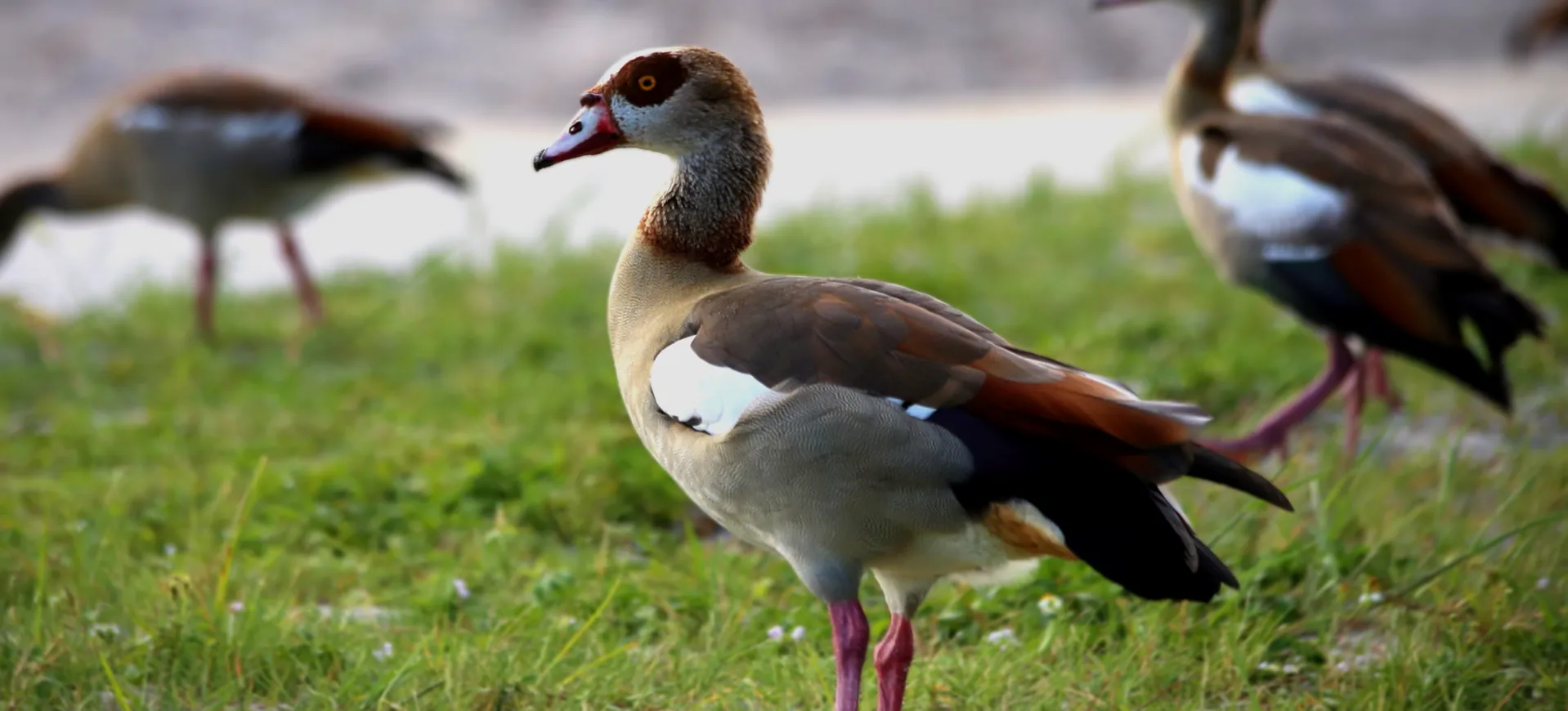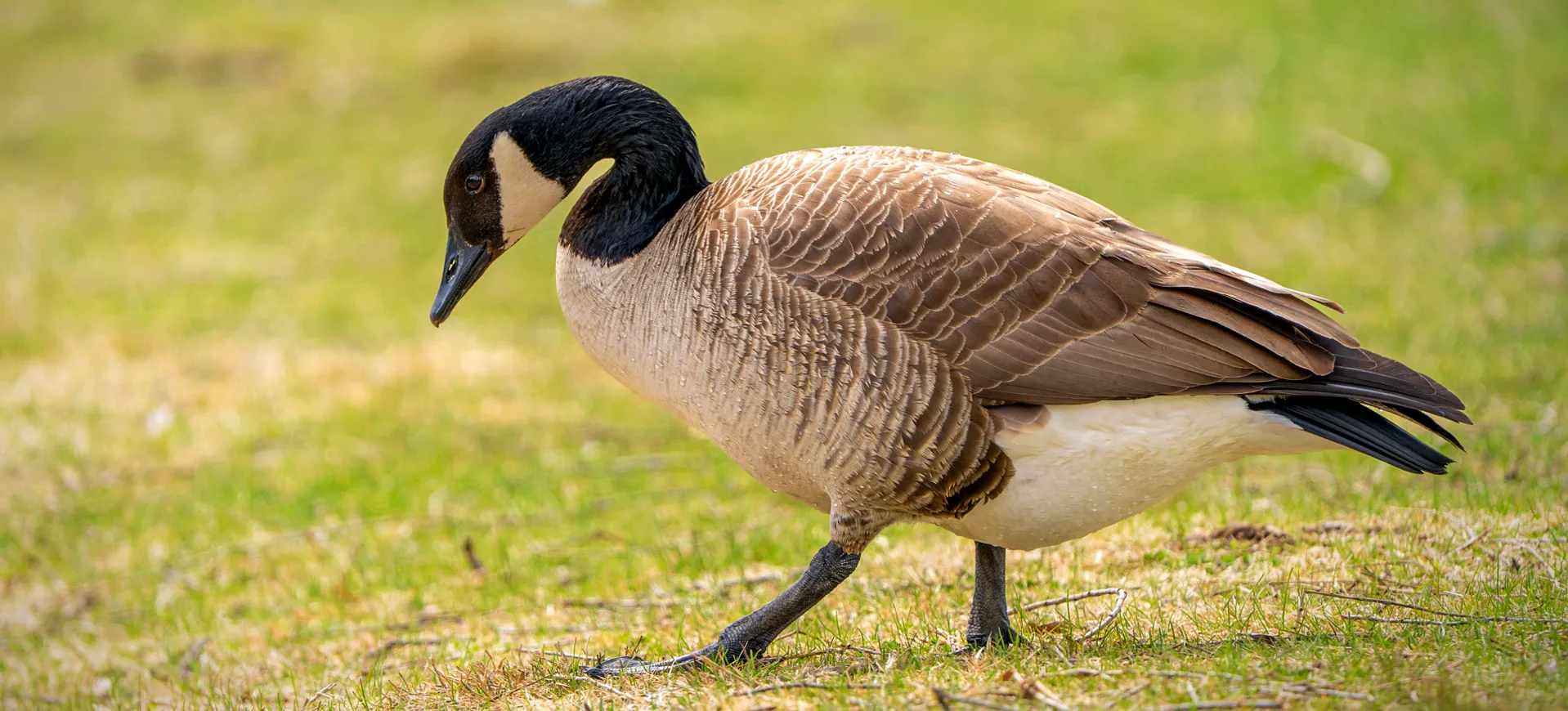Overview
The Garganey, scientifically known as Spatula querquedula, is a small and elegant dabbling duck found across a broad range that spans much of the Old World. It is particularly notable for its striking plumage during the breeding season; males exhibit a distinctive brown head with a broad white stripe over the eye, while females and non-breeding males have more subdued, mottled brown feathering. This species is among the smallest and most delicate dabbling ducks, making it a favorite among birdwatchers and ornithologists. The Garganey’s migratory nature leads it on long annual journeys between breeding grounds in Europe and Asia and wintering areas in Africa, India, and Australasia, showcasing a remarkable endurance and navigational ability for such a small bird.
During the breeding season, the Garganey prefers shallow freshwater marshes, ponds, and lakes with abundant vegetation to find food and shelter. The bird’s diet is varied and includes seeds, aquatic plants, and small invertebrates, which it typically forages for by dabbling at the water’s surface or upending. Unlike many other waterfowl, Garganeys are not very vocal; the male’s most common call is a soft, cricket-like chirping.
The Garganey is an important indicator species for wetland health and is affected by environmental changes due to its reliance on specific habitats. As such, conservation efforts focused on preserving and restoring wetlands are crucial for the continued survival of this and many other species dependent on such ecosystems.
Taxonomy
Kingdom
Phylum
Class
Order
Family
Genus
Species
Type
Physical Description:
The Garganey is a small-sized duck, measuring about 14-16 inches long and weighing 250-400 grams, with males typically larger than females. The most distinctive feature of the breeding male is its broad white eyebrow stripe running from the beak to the back of the head, contrasting with its dark brown head and a black-bordered white crescent on the side of its breast. Its body is mainly gray, with a speckled brown and white pattern, and the wings have a prominent green speculum visible in flight. Females and non-breeding males are more subtly colored, with mottled brown plumage that provides excellent camouflage among reeds and vegetation.
The Garganey has a relatively short bill, typical of dabbling ducks, which it uses to forage for food. Its legs are set slightly back on its body, aiding in swimming but making it somewhat awkward on land. Garganeys are fast and agile in flight, with rapid wing beats that display their striking wing patterns.

Lifespan: Wild: ~5 Years || Captivity: ~10 Years

Weight: Male: 0.55-0.88 lbs (0.25-0.4 kg) || Female: 0.44-0.77 lbs (0.2-0.35 kg)

Length: Male & Female: 14-16 inches (37-41 cm)

Height: Male & Female: 7.5-7.9 inches (19-20 cm)

Wingspan: Male & Female: 20-24 inches (50-60 cm)

Top Speed: 50 mph (80 km/h) during flight
Characteristic:
Native Habitat:
The Garganey breeds in a wide range of freshwater habitats across Europe and Asia, from the Mediterranean region to the Siberian tundra. It favors shallow marshes, ponds, and lakes with dense vegetation, which provide food and cover from predators. The bird’s breeding habitat is characterized by its availability of shallow water for feeding and dense reeds or shrubs for nesting.
During the non-breeding season, Garganeys migrate to warmer regions in Africa, India, and Australasia. Their wintering habitats resemble their breeding grounds, often including wetlands, rice fields, and floodplains. The adaptability of the Garganey to various wetland habitats is one of the keys to its wide distribution.
Climate Zones:
Biomes:
Biogeographical Realms:
Countries:
Diet:
Diet & Feeding Habits:
The Garganey is an omnivorous bird with a diet that includes various aquatic plants, seeds, and small invertebrates such as insects, crustaceans, and mollusks. It typically feeds by dabbling at the water’s surface or upending to reach deeper food sources. During the breeding season, its diet shifts to include a higher proportion of protein-rich invertebrates, which are essential for the development of eggs and the growth of young ducklings.
Garganeys often feed at night, taking advantage of the cover of darkness to avoid predators. They are known to migrate to areas with abundant food sources, and their presence in a particular wetland can be a good indicator of the health and productivity of the ecosystem.
Mating Behavior:
Mating Description:
Garganeys are monogamous during the breeding season, with pairs forming shortly after the birds return to their breeding grounds. Males perform elaborate courtship displays involving head-tossing, mock preening, and distinctive calls to attract a mate. Once paired, the couple selects a nest site on the ground, typically well-hidden among dense vegetation near water.
The female lays 7-14 eggs and incubates them for 22-25 days while the male stands guard nearby. Once the ducklings hatch, they are precocial and leave the nest within a day, following their mother to water, where they begin feeding themselves. The female protects and leads them until they are ready to fledge several weeks later. The care and protection provided by the mother are crucial for the survival of the young in the vulnerable early stages of their life.
Reproduction Season:
Birth Type:
Pregnancy Duration:
Female Name:
Male Name:
Baby Name:
Social Structure Description:
Outside the breeding season, Garganeys are often seen in small flocks, sometimes mixing with other duck species. They are not particularly territorial but will defend their immediate nesting area during the breeding season. Social interactions during migration and wintering periods are generally peaceful, with birds congregating in areas of abundant food and suitable habitat.
Understanding the social behavior of Garganeys, particularly their use of wetlands and response to human activities, is important for their management and conservation. These birds’ movements and distribution can provide valuable information about the health of wetland ecosystems.
Groups:
Conservation Status:
Population Trend:
The Garganey is currently classified as Least Concern by the IUCN, but its population is believed to be decreasing. The exact number of Garganeys in the wild is not well-documented, but they are generally considered widespread, albeit in scattered populations. The main threats to the species are habitat loss and degradation, particularly the draining and pollution of wetlands.
Conservation efforts are focused on protecting and restoring wetland habitats, regulating hunting where it occurs, and monitoring populations to better understand their trends and needs. International cooperation is also vital, given the bird’s long migratory routes and the range of countries involved in its conservation.
Population Threats:
The primary threat to the Garganey is the loss and degradation of wetland habitats due to drainage, pollution, and disturbance. Wetlands are among the most threatened ecosystems globally, and their destruction directly impacts the Garganey and countless other species. Climate change is also a concern, as it can alter the timing of migration and the availability of suitable habitats and food sources.
Hunting and egg collection, particularly in the Mediterranean region, can also impact local populations. Additionally, the birds are vulnerable to avian influenza and other diseases, which can cause significant mortality in wild and captive populations.
Conservation Efforts:
Conservation efforts for the Garganey focus on protecting, managing, and restoring wetlands across its range. International agreements like the Ramsar Convention on Wetlands and the African-Eurasian Migratory Waterbird Agreement aim to provide frameworks for conserving and using these critical habitats. Many countries have designated important Garganey sites as protected areas, helping to safeguard the species’ future.
Research and monitoring are crucial for understanding Garganey’s ecology and informing conservation strategies. Efforts to reduce hunting pressure and control invasive species also contribute to the protection of Garganey populations. Public education and awareness campaigns can help garner support for wetland conservation and protecting this and other waterfowl species.
Additional Resources:
Fun Facts
- The Garganey is the only duck in the Spatula genus, a long-distance migrant.
- Despite being widespread, the Garganey is often elusive and hard to spot due to its small size and secretive nature.
- The male Garganey’s distinctive white eyebrow stripe makes it one of the easiest ducks to identify during the breeding season.
- Garganeys have been known to travel thousands of kilometers between their breeding and wintering grounds.
- Unlike many waterfowl, Garganeys are relatively quiet, with the male’s soft, cricket-like chirping being one of their few vocalizations.
- The Garganey plays a critical role in wetland ecosystems as a consumer of seeds and invertebrates, helping to control pest populations and disperse plant material.
- They are one of the first migratory ducks to arrive at their breeding grounds in spring and one of the first to leave when the season ends.
- The Garganey’s green wing speculum is a key feature distinguishing it from similar species, particularly in flight.
- In some cultures, the arrival of Garganeys is considered a sign of spring and renewal.
- Despite their small size, Garganeys are hardy birds, capable of enduring long migrations and adapting to various wetland habitats.





















































































